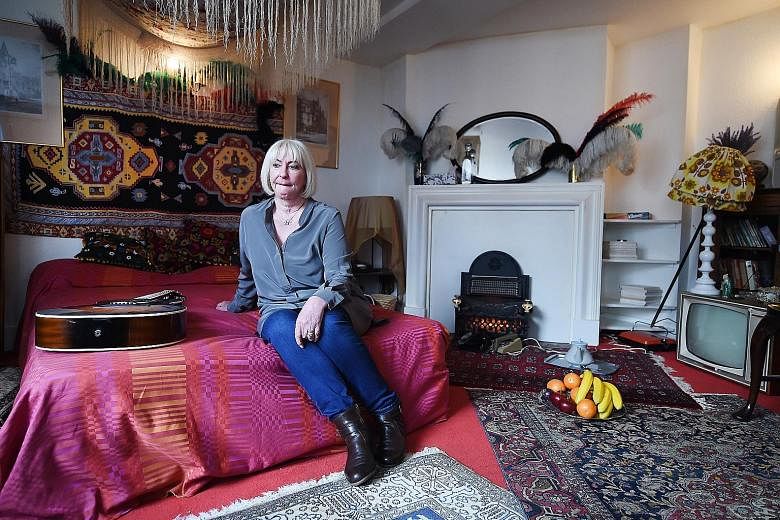LONDON • In the summer of 1968, fresh from a year of touring and recording, Jimi Hendrix rented a small apartment in London with his British girlfriend, Kathy Etchingham and decorated it himself in a style that might be described today as hippie chic.
He pinned shawls to a wall, piled rugs on the floor and decked the mantel with ostrich feathers. The couple spent lazy afternoons in the apartment, at 23 Brook Street in Mayfair, playing board games, listening to records and watching episodes of the television saga Coronation Street. The apartment was next door to the former home of a German-born composer as famous in his day as Hendrix was in the late 1960s: Georg Frideric Handel. Handel lived in the Georgian house at 25 Brook Street for 36 years, from 1723 until his death, and since 2001, it has operated as a museum.
The trust behind the museum also holds the lease on the upper floors of No. 23. In February, Hendrix's apartment, re-created with period artefacts and reproductions, opened to the public in an unlikely coupling of the Baroque and the psychedelic.
Etchingham, now 70, acted as a consultant on the project, which cost about £2.4 million (S$4.4 million). The museum, now called Handel & Hendrix in London, expects to welcome about 50,000 visitors in its first year, up from 20,000 annually when it was just Handel's house. The opening of the Hendrix wing has allowed the museum to reach younger audiences and "become a house that celebrates music", said Ms Michelle Aland, director and chief executive of Handel & Hendrix, which has also added a 40-seat studio for teaching and performing music.
"We've moved from just Baroque and Handel to rock 'n' roll to music in general," she said.
It was Etchingham, who now lives in Melbourne, Australia, who found the £30-a-week apartment through a newspaper advertisement in June 1968. The neighbours were shops and businesses, so the landlord had no objections renting to a rock musician, she said in a telephone interview.
The couple had met in September 1966 at Scotch of St. James, a nightclub where Etchingham, then a hairdresser and DJ, worked. A no-nonsense 20-year-old, she was a habitue of the music scene: She knew members of The Beatles and The Rolling Stones and had once danced with David Bowie.
Yet she was mesmerised by Hendrix, who was building his reputation with blistering live shows in the city's clubs.
"I'd never seen anybody like him before and neither had anyone else," she recalled. "He was very, very funny and good company."
His flamboyant performances, in which he occasionally lit his guitar on fire, were "all an act", she said: "What he did on the stage, he didn't do privately."
The centrepiece of the museum's Hendrix wing is his colourful living room, which contains an oval wood-framed mirror in which he combed his hair (a loan from Etchingham). Everything else - the furniture and fabrics, the floral lampshade, the Bakelite phones, the refrigerator-size speakers - has been reproduced or sourced at auctions of 1960s memorabilia.
The couple played Monopoly, watched TV and ordered hamburgers and bottles of Mateus rose from the downstairs restaurant. Etchingham also poured Hendrix cups of tea, a beverage he sneered at initially.
At night, musicians and performers swarmed the apartment to watch Hendrix play.
"There were no wild parties - no, never," she said, emphasising that the only drug in the house was marijuana.
Etchingham and Hendrix stayed together for nearly three years. She is cited as the inspiration for songs including The Wind Cries Mary. (Mary is her middle name.)
After he started taking heavier drugs, the couple split up.
NEW YORK TIMES

